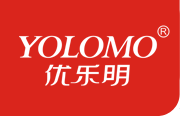What are the different types of table lamps?
这里是标题一h1占位文字
Published Time:
2021-11-22
I. Craft Table Lamps A beautifully designed table lamp placed on a desk, coffee table, bedside table, or even a corner cabinet or decorative shelf in a room often creates a unique effect. A table lamp with a sense of design not only creates a rich indoor lighting environment, but also adds a touch of brightness to the room with its unique effect. Most craft table lamps consist of two parts: a lamp base and a lampshade. The lamp base is made of materials such as ceramic, stone, cloisonné, bamboo weaving, and marble. Lampshades are commonly made of glass, metal, plastic, fabric, and bamboo. With clever coordination of the lamp base and lampshade, the table lamp becomes a beautiful work of art. Craft

I. Craft Table Lamps
Placing a beautifully designed table lamp on a desk, coffee table, bedside table, or even a corner cabinet or decorative shelf in a room often creates a unique effect. A well-designed table lamp not only creates a rich indoor lighting environment but also adds a touch of brightness to the room with its unique design.
Most craft table lamps consist of two parts: a lamp base and a lampshade. The lamp base is made of materials such as ceramic, stone, cloisonné, bamboo weaving, and marble. Lampshades are commonly made of glass, metal, plastic, fabric, or bamboo, and the clever combination of lamp base and lampshade makes the table lamp a beautiful piece of art.
Craft table lamps do not emphasize the lighting function; some even use colored glass diffuse lighting and gauze shades.
The appearance design of craft table lamps is very important, emphasizing artistic shapes and decorative effects. The lamp base may be designed in an elegant vase shape, a pavilion shape, a crown shape, or even a novel telephone shape.
The original intention of a lampshade is to concentrate light and increase brightness. However, for craft table lamps, the lampshade has also become a place for designers to show their skills. Some are designed in a dome shape, while others are designed in a straw hat shape; each has its own unique charm.
No matter what the design, the lampshade and lamp base must ultimately present an overall design effect. In addition, with the increasing variety of table lamp colors, consumers have more choices. Currently, table lamps on the market are available in colors such as milky white, orange yellow, and grass green. You can choose table lamps of different styles and materials according to the room's decoration style, creating a perfect match with other furnishings.
With the emergence of new light sources, a batch of sculptural craft table lamps have appeared. From the appearance, these craft table lamps may look like a vase for flower arrangement, a cartoon character, or a mermaid; the light source is hidden inside.
II. Writing Desk Lamps
Original table lamp using a rotating model.
In the knowledge economy era, every family member has times when they use a writing desk lamp to read or write. Therefore, it is still very necessary to use a writing desk lamp as the main light source to arrange a study lighting environment.
Study lighting emphasizes the effect of local lighting. For lighting with a writing desk lamp as the main source, in addition to considering its brightness, attention must also be paid to its appearance. Its shape and color should be elegant and beautiful, suitable for the calm and elegant learning environment of a study.
Studies have shown that when the illuminance of the surface of the object being viewed reaches 1000 lux, people's eyes see things most clearly and comfortably. Whether a writing desk lamp can increase the desktop illuminance to this standard is probably a key consideration when purchasing one.
Currently, the main light sources used in writing desk lamps on the market are incandescent lamps, quartz halogen lamps, and eye-protection lamps. Incandescent lamps mostly use 40W-60W bulbs as light sources. They do not require a ballast, are inexpensive, and the price difference mainly lies in the shape and lamp shell craftsmanship. However, incandescent lamps consume a lot of electricity, have a high surface temperature, flicker, and have low illuminance and short bulb life. In addition, since the bulb is a spherical point light source, it is difficult to form a large area of uniform high illuminance. Therefore, in developed countries abroad, they are no longer used as writing lighting but only as decorative lamps.
Quartz halogen lamps mostly use 30W-50W halogen bulbs as light sources. They require a ballast and are slightly more expensive than incandescent lamps. Their illuminance is nearly 50% higher than incandescent lamps of the same wattage, and their lifespan is twice as long. Since the bulb is only the size of a small finger, the lamp can be made very small, and the design is more avant-garde. However, the surface of this small halogen light source is hot, and the light is glaring. Touching it can cause burns, so it must be protected with a cover. In addition, this type of lamp is a typical point light source, and the light and dark changes between near and far are very large, making it difficult to form a sufficiently large area of high illuminance on the desktop.
A major appearance characteristic of writing desk lamps is that they have a reflector, an opening at the bottom, and direct shooting. Currently, writing desk lamps on the market include metal snake-shaped tube desk lamps, clip-on spring swing arm suspension lamps, seated dimmable all-plastic lamps, seated dimmable enamel lamps, copper-based classical table column single and double porcelain shade lamps, trough-shaped double porcelain double-color shade lamps, classical candlestick lamps, antique kerosene lamps, and double-headed mother-child glass lamps.
The design of new writing desk lamps pays more attention to convenience and practicality. There are alarm clock and table lamp combinations, miniature fan and table lamp combinations, and pen holders and stationery boxes combined with table lamps.
The lampshades of writing desk lamps are usually opaque or semi-transparent to ensure that the light is concentrated downwards. Their luminance and the distance from the human eye are stipulated. Generally, they are 30-45 cm apart, and the light forms a 45-degree angle with the line of sight.
Designed in 1941 by Finnish designer Paavo Tynell, the material is a combination of brass and leather.
If a writing desk lamp is for students, in addition to brightness, flicker should be avoided. Due to the constant changes in the size of the voltage, the light source of the commonly used AC power often has alternating light and dark phenomena. This light flashing phenomenon is called flicker. Flicker below 100 times per second is low-frequency flicker, which has a strong stimulating effect on people's eyes. Reading or working under this kind of light source for a long time will cause dryness, pain, and fatigue in the eyes of young people, easily leading to myopia.
Currently, a flicker-free vision-care table lamp has appeared on the market. It converts ordinary AC signals into high-frequency signals through electronic processing, so that people's eyes do not feel the flicker phenomenon, which is very beneficial for protecting eyesight.
Experts remind parents that when choosing lamps for students, they can bring a small spinning top with them. If no visual illusion of reversal occurs under the light, it means that the lamp does not flicker.
Keywords
Related News







